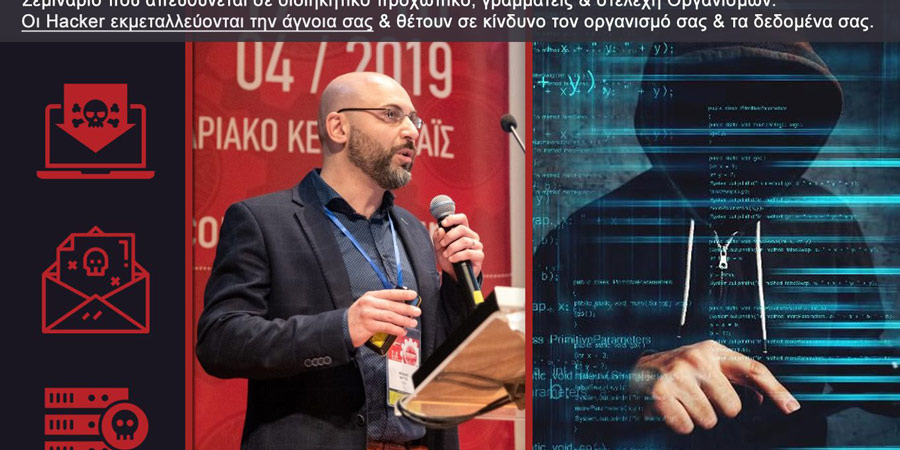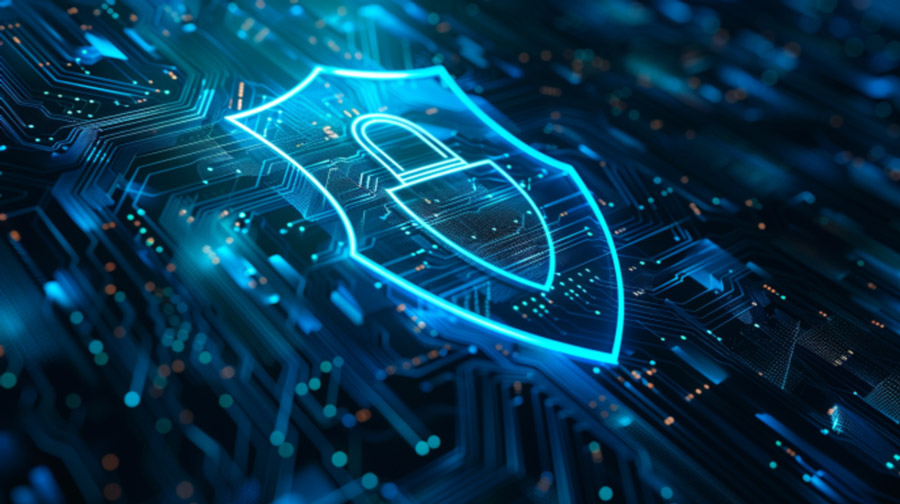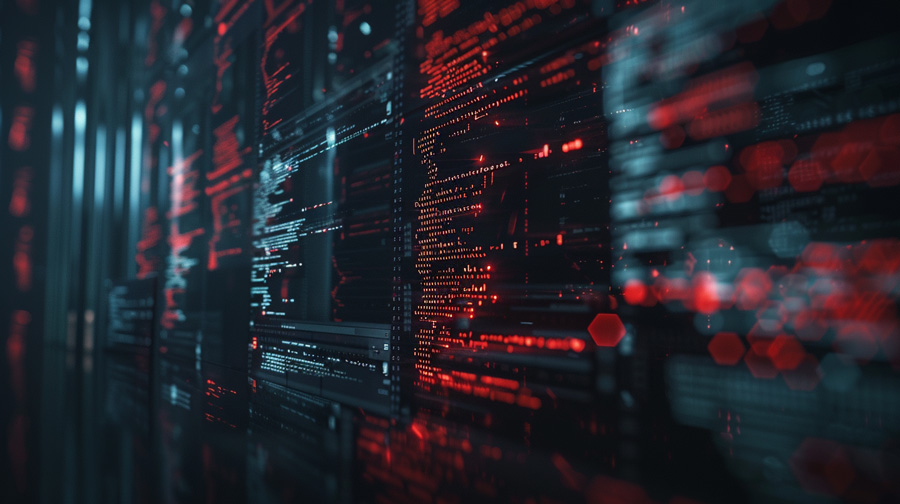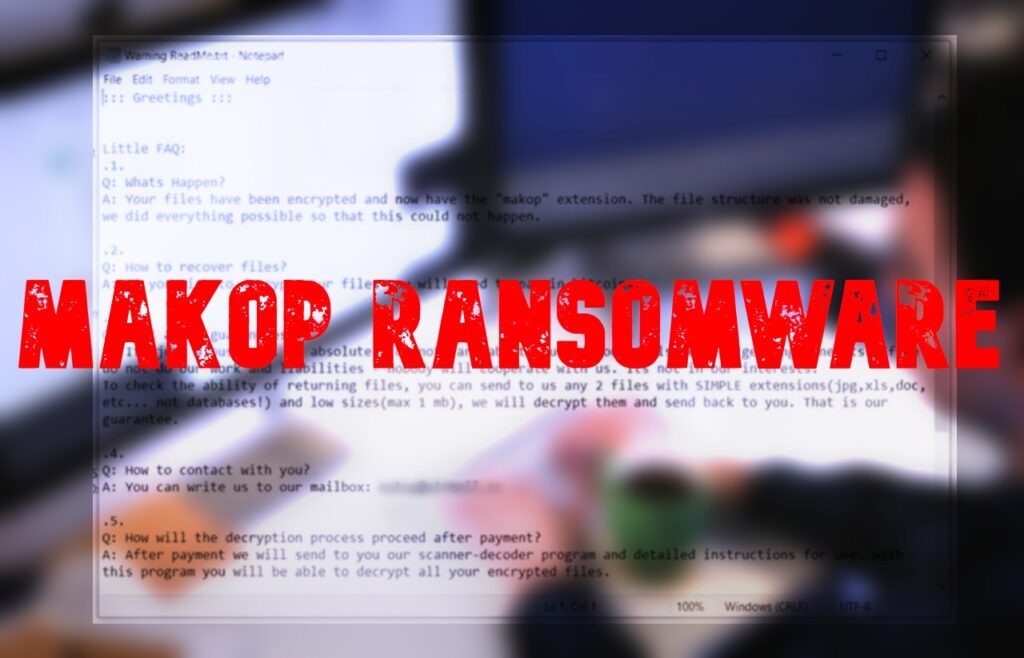What is a cyberattack?
A cyberattack is any malicious action aimed at breaching computer systems, gaining unauthorized access to data, and disrupting services, intending to cause damage or steal information.
In the age of digital technology, cyberattacks are one of the most significant threats to the security of both businesses and individuals. Cyberattacks include a range of malicious activities aimed at compromising IT systems, gaining unauthorized access to data, and disrupting services.
The importance of understanding the different types of cyberattacks is critical to developing effective security strategies and protecting against ever-evolving threats.
The European NIS2 framework is set to significantly strengthen protection against such
threats, making cybersecurity mandatory for organizations and businesses.
In this article, TicTac examines the various forms of cyberattacks, providing a detailed overview of the techniques used by attackers.
What are the most frequent cyberattacks in Greece?
The most common cyberattacks in Greece are Malware, Cryptocurrency Theft, Business Email Compromise (BEC Scam), and Ransomware Attacks.
In detail, the Top 10 are:
Let’s analyze each of them:
1. Malware
What is malware?
Malware is a type of software designed to cause harm or gain unauthorized access to computer systems.
This includes various forms such as viruses , Trojans , worms , and ransomware . Viruses attach themselves to legitimate programs and spread when they are executed, Trojans imitate legitimate software but perform malicious actions when installed, and worms are standalone programs that spread over networks without the need for human interaction.
2. Business Email Compromise (BEC Scam)
What is a BEC Scam?
BEC attacks trick businesses via email into making unwanted money transfers or revealing sensitive information, using persuasive and carefully tailored communications.
Attackers often monitor and study a company’s communications to mimic the language and tone of real emails, making the cyberattack more convincing. The consequences can include significant financial losses and the leakage of confidential information.
3. Insider Threats and Accidental Data Loss
What are internal threats to companies?
Insider threats come from individuals within the company, causing intentional or unintentional damage to data and systems through theft, sabotage, or negligence. These threats can include data theft, sabotage, or data loss due to negligence.
These threats are dangerous because they come from individuals who already have authorized access to the company’s systems and can cause damage without being easily detected.
4. Advanced Persistent Threats (APT)
What is APT?
APTs are long-term, targeted attacks by experienced attackers who maintain unauthorized access to networks to steal sensitive data through techniques such as phishing and malware.
These attacks differ from traditional attacks due to their duration and complexity. Attackers are constantly seeking new vulnerabilities and employ sophisticated techniques to remain undetected. Their constant presence allows them to gather information and gradually extract high-value data, making them extremely difficult to detect.
5. Third Party and Vendor-Related Risks

Third-party and supplier risks arise from external partnerships with differing security policies, which can allow potential attacks through these vulnerabilities.
Reliance on third-party suppliers can expose a business to significant security risks. If external partners do not adhere to strict security standards, they can become weak links. Attackers can exploit these weaknesses to penetrate the business’s systems, making it necessary to strictly control and constantly monitor partners.
6. Cryptocurrency Theft
What is cryptocurrency theft?
Cryptocurrency theft targets digital wallets, using phishing, malware, and vulnerability exploitation to steal stored cryptocurrencies.
Cryptocurrency theft attacks often exploit the anonymity and poor security of digital wallets. Attackers can gain access to cryptocurrencies through malicious emails, deceptive websites, or by exploiting vulnerabilities in trading systems. The loss of cryptocurrencies can be irreversible, making protection and security, critical.
7. Ransomware
We have written a detailed article specifically about ransomware that explains the topic in more detail. In short, ransomware is a type of malware that encrypts victims’ files and demands a ransom for their decryption. This form of attack can cause serious downtime and financial losses for businesses and individuals.
8. Targeted Intellectual Property Theft
What is intellectual property theft?
Intellectual property theft includes attacks aimed at acquiring trade secrets, patents, and copyrights through phishing, malware, and APTs.
Intellectual property theft attacks can have serious consequences for businesses, including loss of competitive advantage and financial losses. Attackers often target research and development departments, using sophisticated techniques to gain access to sensitive information that can be sold or exploited for commercial purposes.
9. Payment Card Fraud (PCI/PFI)
What is credit card fraud?
Credit card fraud involves the theft of payment information for unauthorized transactions through breaches in online marketplaces and poorly secured payment systems.
Such fraud can lead to significant financial losses for both consumers and businesses. Attackers often use techniques such as stealing data from compromised systems or using malware to capture payment information. Protecting against such attacks requires strict security measures and regular transaction monitoring.
10. Web Application Attacks and Password Theft
What are web application attacks?
Web application attacks and password theft use techniques such as SQL injection, Cross-Site Scripting (XSS), and brute force to gain unauthorized access to accounts and sensitive information.
These attacks often exploit weaknesses in application code. Techniques such as SQL injection and Cross-Site Scripting (XSS) allow attackers to gain access to databases. At the same time, brute force attacks try multiple password combinations to gain access to user accounts. Protecting against these attacks requires implementing strong security measures, such as regularly updating software, using complex passwords, and adopting two-factor authentication methods.
How Are Cyberattacks Categorized?
Every cyberattack can be categorized in the following ways:
Based on the goal:
Attacks can target individuals, businesses, or governments. Attacks on individuals often focus on stealing personal information, such as passwords and credit card data. Attacks on businesses may seek to obtain sensitive business data or disrupt their operations. On governments, attacks often aim to spy on or disrupt government services.
Based on the technique:
Attacks can also be categorized based on the technique used. Standard methods include malware, phishing, distributed denial of service (DDoS) attacks, and SQL injection. Each of these techniques has its unique characteristics and modes of operation.
Based on the motivation:
The motivations behind cyberattacks can vary considerably. Some attacks are aimed at financial gain, such as ransomware, which demands a ransom to release encrypted data. Other attacks focus on espionage, gathering sensitive information for political or business purposes. There are also attacks driven by activism (hacktivism), aimed at advancing political or social goals by compromising systems.
Cyberattack Techniques and Methods

1. Social Engineering
Social engineering involves the use of psychological techniques to deceive individuals into disclosing sensitive information or performing actions that compromise their security. Attackers exploit human psychology and social interactions to bypass technical security measures and gain access to sensitive data.
How do they do this? In 3 ways:
a. Pretexting
A social engineering technique where attackers create false stories or scenarios to obtain information from the victim. For example, the attacker may pretend to be a company employee, requesting information from a colleague or customer to steal data.
b. Baiting
Baiting involves offering something attractive, such as free software or access to interesting files, to trick the victim into performing an action that will put them at risk. A typical example is distributing USB drives infected with malware, which are placed in public places in the hope that someone will use them on their computer.
c. Quid Pro Quo
The quid pro quo technique involves offering help or services in exchange for sensitive information. For example, an attacker might pretend to be a support technician, providing help to a user in order to gain access to systems or data.
2. Brute Force Attacks
Brute force attacks involve the use of automated tools to crack passwords by trying all possible combinations. These attacks rely on the power of computing systems to crack passwords through a method of continuous trial and error.
Brute force attacks can be highly time-consuming, but they are effective when passwords are simple or short in length. Attackers can utilize dictionaries of words or common passwords to expedite the process. To protect against brute force attacks, it is crucial to use strong and complex passwords, as well as implement security mechanisms such as multi-factor authentication (MFA) and locking accounts after a certain number of failed login attempts.
3. Exploit Kits
Exploit kits are tools that use software vulnerabilities to perform malicious actions. These kits include collections of malicious scripts and programs that exploit specific vulnerabilities in programs and systems. Exploit kits are often available on the dark web and can be used by attackers with limited technical knowledge to automate attacks.
Attackers use exploit kits to infect systems with malicious software, such as viruses, Trojans, and ransomware. Exploit kits often exploit vulnerabilities in browsers, plugins, and other applications installed on victims’ computers. When users visit infected websites or open malicious emails, exploit kits exploit the vulnerabilities and install malicious software without the users’ knowledge.
Protection against exploit kits includes regularly updating software and browsers, installing security patches, and using antivirus programs that can detect and block malware. In addition, educating users to avoid suspicious links and emails is critical to reducing the risk of infection.
Effects and Consequences of Cyberattacks
Any cyberattack can have serious economic consequences, affecting individuals, businesses, and governments. Businesses can lose revenue due to downtime, recovery costs, and lost customers, while individuals can suffer financial losses from identity theft and fraudulent transactions. Attacks such as ransomware often demand large sums of money to release encrypted data, while DDoS attacks can cause significant losses due to disruptions in access to online services.
Privacy breaches are one of the most serious consequences of cyberattacks. Attackers can gain access to sensitive personal information, such as medical records, financial data, and personal communications, which can be used for identity theft or blackmail. These breaches cause emotional distress and reduce trust in technologies and service providers. Businesses that suffer such breaches can face legal consequences and reputational damage.
Finally, such an attack can cause significant damage to an organization’s reputation. A publicized cyberattack can erode customer trust, leading to lost customers and revenue. Businesses may need to invest substantial resources in restoring their image through public relations and security improvements. Additionally, the legal implications can be severe for both attackers, who may face criminal prosecution, and organizations that fail to protect their data, resulting in sanctions and fines.
Protection and Countermeasures against Cyberattacks
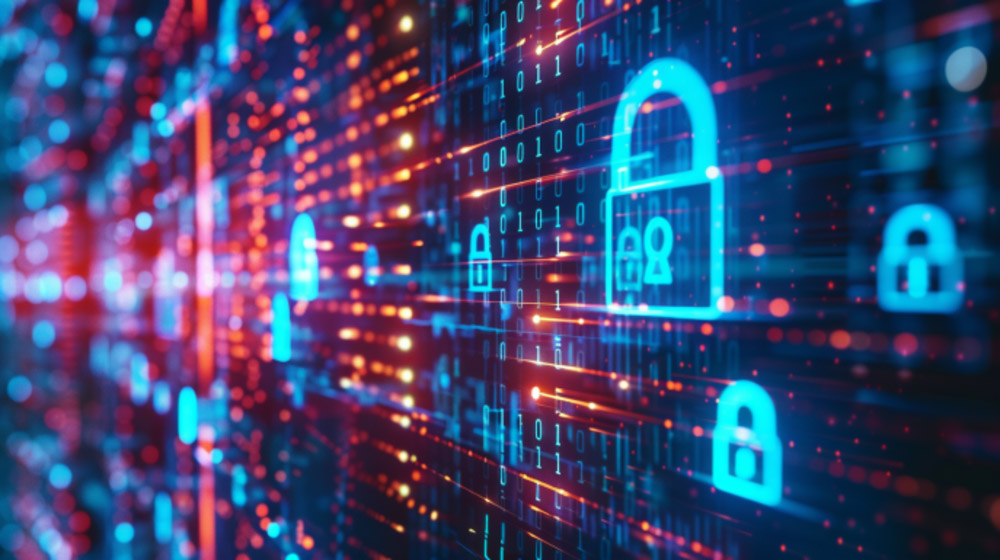
The increasing frequency and severity of cyberattacks make protecting information systems and data a critical priority for businesses, governments, and individuals. Countering cyberattacks requires a combined approach that includes implementing technical security measures, educating users, and establishing strict security policies.
Let’s take a closer look at the critical steps for protecting and effectively responding to cyberattacks.
1. Technical Measures
Implementing technical security measures is fundamental to protecting against cyberattacks. These include data encryption, the use of firewalls, and intrusion detection and prevention systems (IDS/IPS). Additionally, organizations can benefit from Penetration Testing, which helps identify and assess vulnerabilities in their security systems.
Using multi-factor authentication (MFA) offers an extra layer of security, making it more difficult for attackers to gain access to systems and data even if they have stolen passwords. Additionally, using secure communication protocols, such as HTTPS, helps protect data as it travels over the internet.
2. User Training
User education is crucial in countering threats posed by social engineering and other forms of attacks that target human vulnerabilities. Users must be aware of the various techniques used by attackers and know how to recognize suspicious messages and links.
Training should include instructions on creating strong passwords, recognizing phishing emails, and using the internet and social media safely. Businesses can conduct regular training and attack simulations to ensure users are prepared to deal with threats.
3. Antivirus and Antimalware Software
The use of antivirus and antimalware software is a fundamental practice for protection against malware and other threats. This software detects, blocks, and removes malicious software from systems, thus protecting the organization’s data and operations.
Antivirus software constantly monitors system activity and can detect and neutralize viruses, worms, and other malicious programs. Meanwhile, antimalware software specializes in identifying and dealing with modern threats, such as spyware, ransomware, and adware.
However, we must not forget that, in addition to installing the software, it is equally important to update it regularly to protect against new and evolving threats.
4. Cloud Security
With the increasing adoption of cloud services, cloud security is becoming increasingly important. Organizations must ensure that cloud service providers implement robust security measures and comply with relevant data protection regulations and policies. Additionally, organizations must implement their own security practices to protect data and applications hosted in the cloud.
Using encryption to protect data in storage and transit is critical. Additionally, implementing access control mechanisms and monitoring cloud activity can help detect and respond to suspicious activity.
Understanding and responding to cyberattacks is crucial for protecting data and systems, both for individuals and organizations. Continuous education, the use of advanced security software, and the adoption of good security practices can significantly reduce the risk from various forms of cyberattacks. In an increasingly digital world, information security must remain a primary goal to ensure the integrity and reliability of technological infrastructure.
It is worth noting that with TicTac’s Security ScoreCard service, organizations can monitor and improve their Cyber Rating, ensuring their credibility for existing and new partnerships. Through continuous vulnerability assessment and personalized support from our specialized engineers, this tool provides robust protection, enabling businesses to achieve a higher score, which plays a crucial role in their partnerships.












